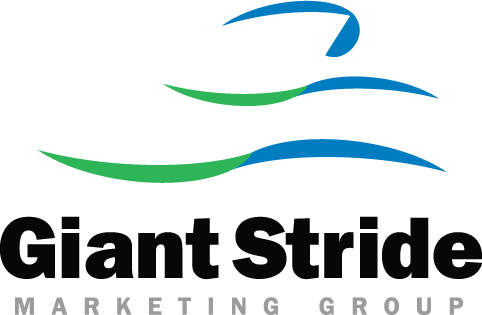Dissecting Your Competition Through Investor Communications
For the competitive analyst, investor disclosure means competitive fodder. Particularly for small, publicly traded companies, earnings calls, quarterly SEC filings (the 10-Q) and annual filings (the 10-K) provide a wealth of information that you can use to beat your competition. In this article, I have provided you with a checklist for your competitive reviews.
Run the Numbers
Be sure to give your competitors’ financial statements a close look and run comparisons with your company and industry averages. The MarketWatch site www.bigcharts.com is very useful for comparisons. Important line items to review include:
License and services revenue trends and license-to-services ratio. In the absence of a major change in business model, rising or falling license revenues lead to similarly rising or falling services revenues 3-6 months out.
Deferred revenue. How much revenue has been booked but not recognized? Depending on the business circumstances, you might recognize rising deferred revenues as either a good sign for the competitor (deals that are “in the bag” and represent future revenues) or a bad one (accumulated contracts with “contingencies” that the company hasn’t been able to meet).
Cost of license sales. A software company with significant cost of revenues is OEMing key technology. You should find disclosures about such relationships in the notes to the financial statements. Look for commitments to minimum sales on OEM products. These commitments may create future unplanned payouts.
Gross margin. The mix of software licenses to services revenues will greatly affect this ratio. So will the nature of the services business. Is the company delivering services profitably, or are they making major concessions to win business?
Changes in earnings (losses) before interest and taxes. Examine the company’s overall profitability trends. Is the cost of sales rising or falling? The company may be staffing up on new sales reps, who take a while to become productive. Or, it could be over- or under-investing in marketing. Are general and administrative expenses changing unexpectedly?
Current ratio (current assets/ current liabilities). This is an important liquidity ratio—can this company service its obligations to creditors? To customers?
Days sales outstanding (accounts receivable/ sales per day). This ratio reflects how quickly customers are paying: An increasing DSO can indicate that the company is extending payment terms to win business.
Debt-to-equity ratio. Look for significant debt, in particular revolving credit lines and other vehicles under Current Liabilities.
Read the Fine Print
The 10-K and 10-Q contain a great deal of information about the state of a business, often surrounded by lots of boilerplate legal language. Areas to review include:
The business overview in the Management’s Discussion and Analysis section. Look for any unusual statements about the business or business strategy.
Revenue recognition policies. Most software companies recognize revenue in the same way. If your competitor’s disclosure doesn’t match others in the industry, look into why.
Public companies must disclose any customers that represent more than 10% of revenue in a particular reporting period—and create a risk to the business in the event of defection.
Some companies will provide revenue by segment in the notes to their financial statements. Often, this means a breakout of revenues by geography, but some companies disclose product line revenues as well.
The notes may contain other useful information. For example, one software company I recently analyzed disclosed enough information for me to calculate the percentage that the company was paying to a critical OEM partner—and thus their margin on the product.
Headcount disclosures can provide interesting information such as commitment to R&D or sales and marketing. Some companies will also disclose the number of quota-carrying reps on their earnings calls.
If the company has any debt arrangements, check the terms and look for information on any covenants with the lender, such as requirements to maintain minimum cash balances. These types of requirements could hinder its ability to support customer needs.
Look for other potential liabilities. For example, some companies have over-invested in real estate which is now sitting empty.
Examine legal proceedings. There may be some useful information about products, technology or business strategy in this section.
Don’t forget the risks. While many of the risk disclosures are common across software companies, your competitor may disclose specific risks of interest.
Look for contingencies. This example brings to light a significant liability and also reveals sales figures for an OEM product:
In September 2002, the Company entered into an agreement with a third-party software company to resell that company’s product through April 2005. Under the agreement, the Company committed to purchase $1.0 million of the software company’s software over the first year of the agreement. In September 2003, the Company amended the agreement to extend the $1.0 million commitment until April 2005. If the Company fails to resell $1.0 million of the third-party company’s software by April 2005, the third-party software company will be paid on the remaining unsold balance. The Company is currently undertaking efforts to renegotiate this agreement and is evaluating its potential ability and intent to fulfill this obligation. As of September 30, 2004, $321,000 had been purchased under this agreement.
Properties
This section can contain interesting information about potential liabilities.
Legal Proceedings
Again, you may find potential liabilities here, or information about dissatisfied customers or partners.
Listen to the Call
Be sure to listen to your competitors’ earnings calls. These calls contain great information about business and competitive outlook, new customers, workforce composition, and even product information.
Go Back In Time
I have found valuable information by looking back into old filings. For example, one company disclosed information in its S-1 (filing for its initial public offering) two years earlier that was a state secret by the time I began my competitive analysis.
Persistence Pays!
Sifting through lengthy documents with more boilerplate language than useful information is always tedious, but the rewards for you and your sales team can be quite high.
